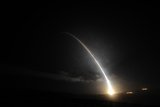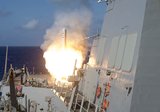How UAE defence giant EDGE Group plans to double its exports
The UAE defence conglomerate has put an aggressive strategy in place to increase its share of exports while navigating the growing gap between East and West.
Horizon Air has announced that on 30 December 2009 it became the first scheduled-service passenger carrier to operate using Wide Area Augmentation System (WAAS) technology during a flight from Portland to Seattle using a Bombardier Q400.
“Horizon Air has long been committed to innovation and technical excellence, and we’re particularly proud to be spearheading the use of this new technology, which holds the promise of benefitting many thousands of customers in years to come,” said Jeff Pinneo, Horizon’s president and CEO.
An aircraft utilising WAAS can, in some cases, land in adverse weather conditions with as little as a half-mile of visibility at 200 feet of altitude – conditions that would deter aircraft not similarly equipped.
WAAS builds on Horizon’s previous advances – made in conjunction with its sister airline, Alaska Airlines – in flight management system (FMS) technology, such as Required Navigational Performance (RNP) and Global Positioning System (GPS) satellite networks. In 2006, Horizon became the first regional carrier to be certified for RNP approaches, which use a combination of onboard navigation technology and GPS. WAAS takes that a step further by using additional satellites that monitor GPS satellite signals; it then corrects for any errors in GPS satellite position.
The new WAAS instrument approach is known as “localiser performance with vertical guidance” (LPV). Unlike RNP approaches, which are only available for use at airports after an extensive certification process, WAAS approaches can be used at any airport where the navigation database has been updated.
There are now more LPV approaches available in US airspace than Instrument Landing Systems (ILS) approaches, which involve using an older, ground-based radio signal system for landings in lower-visibility weather. One LPV advantage is that it doesn’t rely on ground-based equipment susceptible to outside factors such as weather or power outage.
Currently, Horizon has one WAAS-equipped Q400, with a flight management system developed by Universal Avionics. The US Federal Aviation Administration (FAA) has agreed to support WAAS upgrades on six more Horizon Q400s. In return, Horizon will provide the FAA with flight data on 300 legs of flying, so the agency can determine the full value of WAAS technology.

The UAE defence conglomerate has put an aggressive strategy in place to increase its share of exports while navigating the growing gap between East and West.

The US Congress has raised concerns about how inflation rates and cuts in main acquisition programmes could affect the US military.

Washington’s ageing inventory and the pace Moscow and Beijing have been modernising their capabilities put in check the US Nuclear deterrence.

The Pentagon has been operating under temporary funding since October 2023, which has impacted its main acquisition and development programmes, increasing the capability gap between the US and China.

In 2023, defence spending increased by an unprecedented 11% across European NATO countries and Canada. Since 2014, the group has spent an additional US$600 billion on defence.

The DoD requested nearly US$850 billion to fund operations over the next fiscal year. Despite the amount being 1% higher than the FY2024 budget request, it has not covered the 3% inflation rate, which could impact the DoD’s main programmes in the medium and long term.